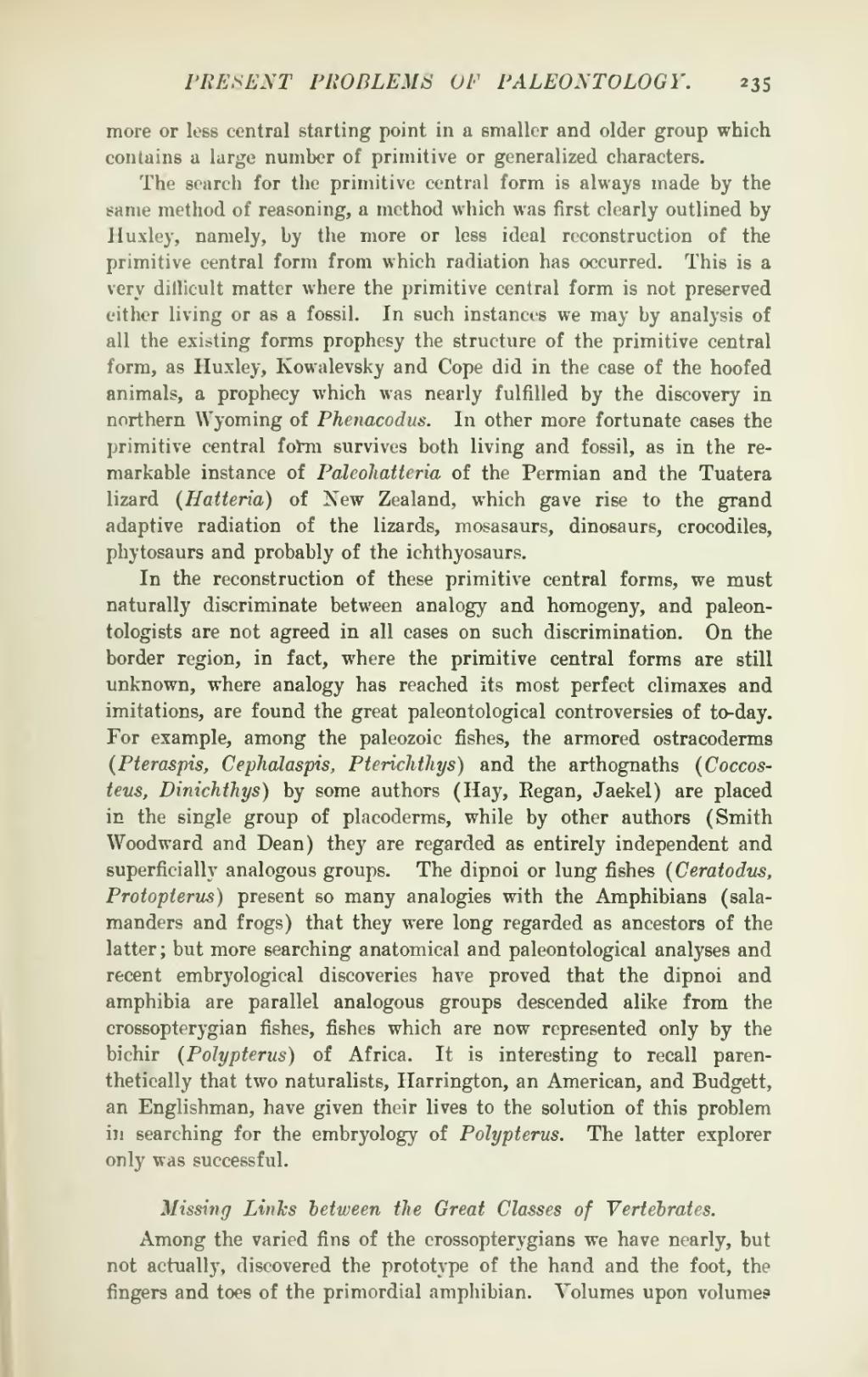more or less central starting point in a smaller and older group which contains a large number of primitive or generalized characters.
The search for the primitive central form is always made by the same method of reasoning, a method which was first clearly outlined by Huxley, namely, by the more or less ideal reconstruction of the primitive central form from which radiation has occurred. This is a very difficult matter where the primitive central form is not preserved either living or as a fossil. In such instances we may by analysis of all the existing forms prophesy the structure of the primitive central form, as Huxley, Kowalevsky and Cope did in the case of the hoofed animals, a prophecy which was nearly fulfilled by the discovery in northern Wyoming of Phenacodus. In other more fortunate cases the primitive central form survives both living and fossil, as in the remarkable instance of Paleohatteria of the Permian and the Tuatera lizard (Hatteria) of New Zealand, which gave rise to the grand adaptive radiation of the lizards, mosasaurs, dinosaurs, crocodiles, phytosaurs and probably of the ichthyosaurs.
In the reconstruction of these primitive central forms, we must naturally discriminate between analogy and homogeny, and paleontologists are not agreed in all cases on such discrimination. On the border region, in fact, where the primitive central forms are still unknown, where analogy has reached its most perfect climaxes and imitations, are found the great paleontological controversies of to-day. For example, among the paleozoic fishes, the armored ostracoderms (Pteraspis, Cephalaspis, Pterichthys) and the arthognaths (Coccosteus, Dinichthys) by some authors (Hay, Regan, Jaekel) are placed in the single group of placoderms, while by other authors (Smith Woodward and Dean) they are regarded as entirely independent and superficially analogous groups. The dipnoi or lung fishes (Ceratodus, Protopterus) present so many analogies with the Amphibians (salamanders and frogs) that they were long regarded as ancestors of the latter; but more searching anatomical and paleontological analyses and recent embryological discoveries have proved that the dipnoi and amphibia are parallel analogous groups descended alike from the crossopterygian fishes, fishes which are now represented only by the bichir (Polypterus) of Africa. It is interesting to recall parenthetically that two naturalists, Harrington, an American, and Budgett, an Englishman, have given their lives to the solution of this problem in searching for the embryology of Polypterus. The latter explorer only was successful.
Missing Links between the Great Classes of Vertebrates.
Among the varied fins of the crossopterygians we have nearly, but not actually, discovered the prototype of the hand and the foot, the fingers and toes of the primordial amphibian. Volumes upon volumes
